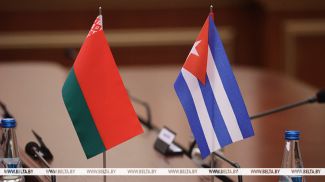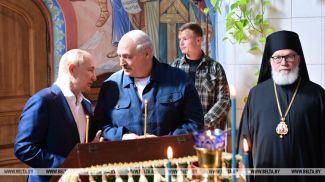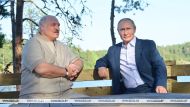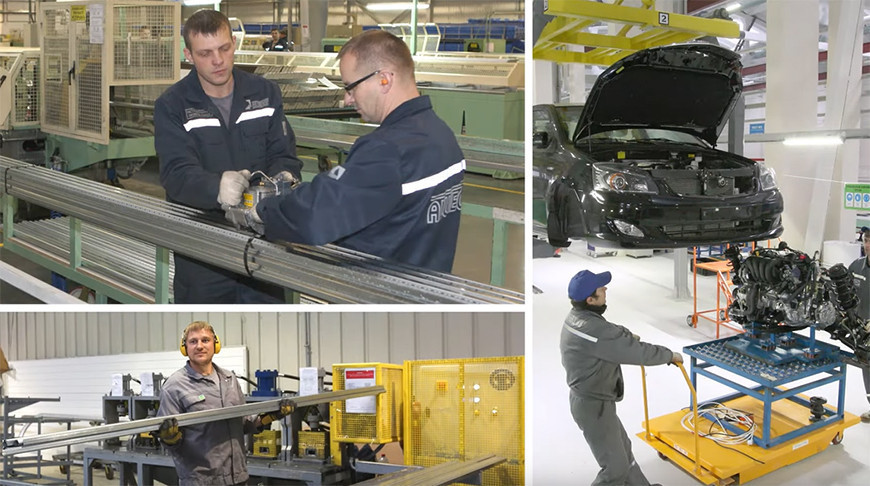
Belarusians are hard working people. The slogan "Peace, Labor, May" is as relevant today as ever. On 1 May, we talk about the things that help us keep the country clean and tidy and actually independent. Honest work equals a strong economy. In the new episode of BelTA’s YouTube project "After the Fact: Lukashenko’s Decisions” we will focus on free economic zones and their history. We will learn what the president wants from such zones and how they contribute to the country's overall budget.
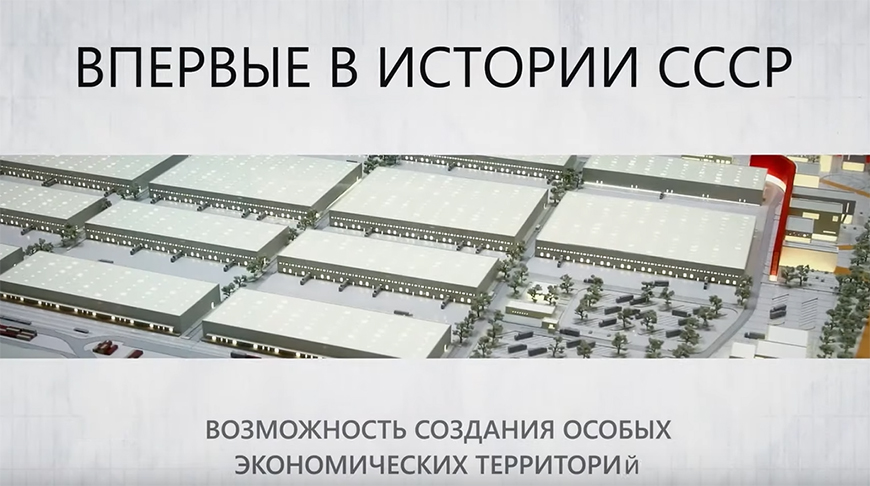

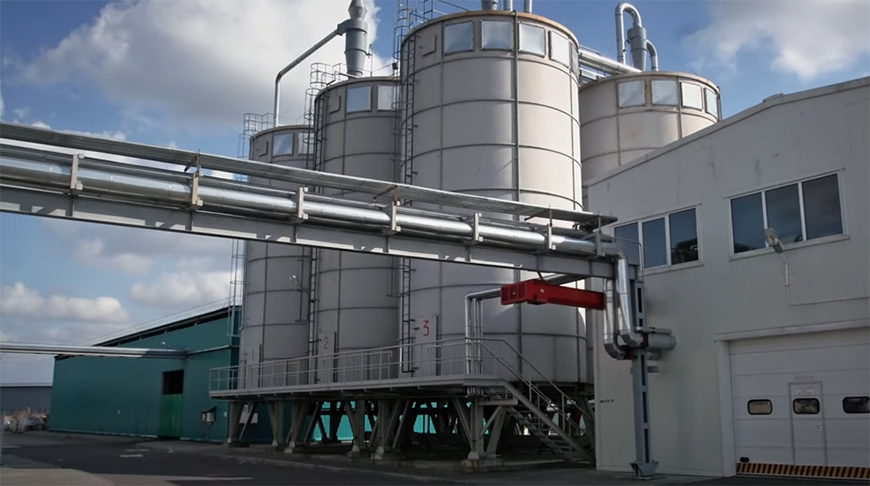
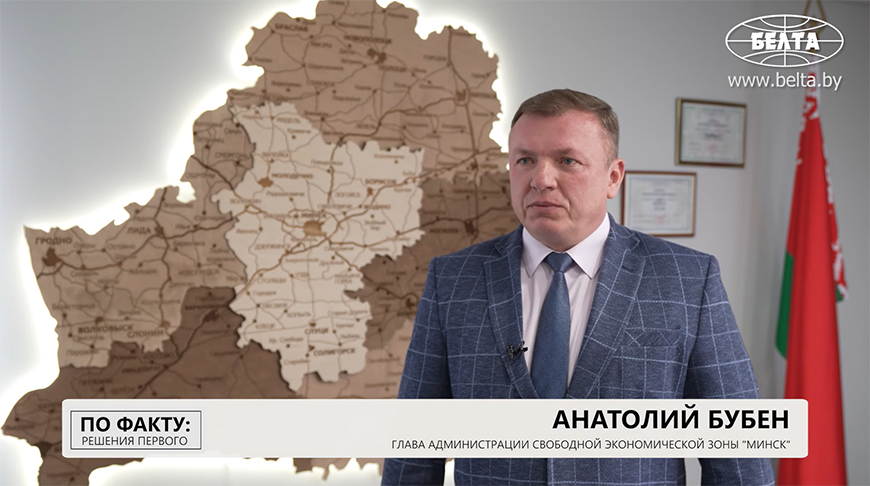
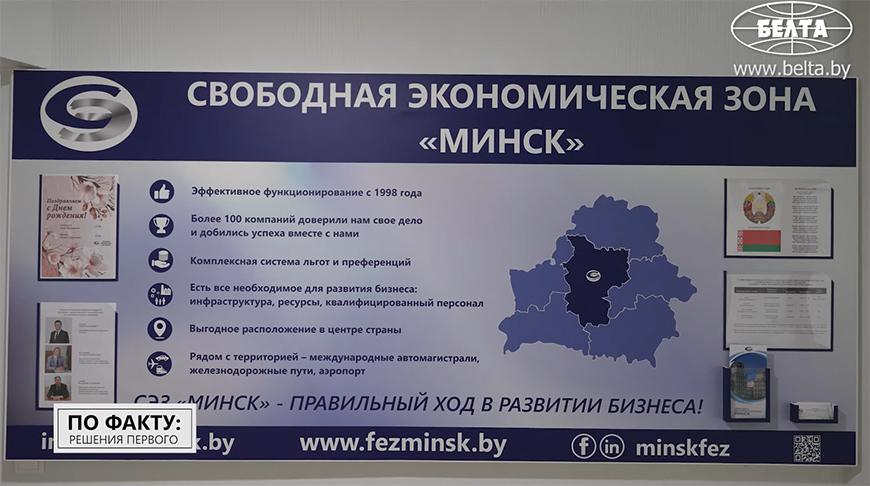
Where and when was the first FEZ set up in Belarus?
The idea of creating a free economic zone in Belarus emerged in the 1980s. The country struggled through a social and political instability period... The Soviet economy was facing the problems that needed to be addressed. The old methods didn’t work anymore. Innovative approaches were needed. In 1988, the government issued a special resolution which, for the first time in the history of the USSR, opened up the possibility of creating special economic territories.
The western part of the country was considered as an experimental site. Brest Oblast was a perfect fit as it was located near the state border and had good industrial and transport infrastructure. So, in the autumn of 1989, work was launched on a FEZ project in Brest Oblast. Alas, the plans were ruined by the collapse of the USSR.

The issue was revisited in independent Belarus. On 26 February 1992, a resolution was adopted to set up a FEZ in Brest Oblast. However, in the difficult 1990s, the country had enough problems to worry about. So the process was delayed again.
On 20 March 1996 the president issued a decree "On Free Economic Zones in the Republic of Belarus". Finally, the country developed a regulatory framework, appointed FEZ executives and approved the regulations on the Brest Free Economic Zone.
What tasks were set for the Belarusian FEZs?
Later, these practices formed the basis for the 1998 law which clearly spelled out what the FEZ is. It is a designated territory with a special legal regime that establishes more favorable conditions for entrepreneurial and other economic activities than in the rest of the country.
In other words, it offers a relaxed procedure for export-import operations, customs privileges, tax preferences, and a simpler procedure for registering a business. All in all, a FEZ provides additional incentives for new investment projects.
On 19 December 1996, a first resident company was registered in the first FEZ of Belarus. A company with foreign capital joined the FEZ a year later. From 1996 to 2002, six FEZs were established in Belarus, one in every region. All of them performed one and the same tasks: to attract domestic and foreign investment, to create new jobs, to produce highly competitive goods, and to assimilate new advanced technologies.

“Enterprises operating in free economic zones are offered not just preferential, but super preferential terms. It was promised that they would generate billions of dollars for our economy within 3 to 5 years. It was one of the main reasons for creating such zones. How many Belarusians received great jobs and salaries in the FEZs?” the head of state posed a question during a meeting on the free economic zones in may 2004.
“I believe that our government has done a lot to promote free economic zones. I’ll be honest: I’m not quite happy yet with their contribution to the economy. I cannot say that the economy does not benefit from them, but their contribution is still small,” the Belarusian leader said then.
How many free economic zones are there in Belarus?
Belarus has six free economic zones with 425 companies registered there. The list includes FEZ Minsk, FEZ Gomel-Raton, FEZ Grodnoinvest, FEZ Brest, FEZ Mogilev, and FEZ Vitebsk. They employ cumulatively over 136,000 people.
Let’s take FEZ Minsk as an example. It is one of the country’s most attractive investment sites. In 2023, it marked its 25th anniversary. Over this time, the free economic zone has made a significant contribution to the economic growth of not only Minsk and the region, but also to the entire country.
“A total of 105 enterprises have been launched, 46 factories have been built, 30,000 jobs have been created and $3 billion has been raised in FEZ Minsk.
46% of its enterprises make innovative products. The export is estimated at $700 million,” said Anatoly Buben, the head of the FEZ Minsk Administration

What is special about the Belarusian FEZs?
Free economic zones are a very common form of doing business. Such zones operate under different names in about 120 countries. They offer different benefits and preferences that are guaranteed by the state. Belarus is an exporting country, so it is only logical that our FEZs support endeavors that are aimed at making products that will be competitive abroad. Belarus’ economy relies on export. Companies that make products for foreign markets can claim benefits.
“Today we are focused on import substitution. Import-substituting products account for 75% of the output at the FEZ. These are our main conditions,” Anatoly Buben added.

Here are some figures from the Economy Ministry: FEZs generate 5.3% of GDP, 18% of industrial output, almost 4% of fixed investment, over 20% of export of goods. Last year, the amount of taxes, fees and payments paid by resident companies went up by 44%.
“To join a FEZ, a company needs to present is a business idea and invest about €500,000. Its products should be innovative. We will allocate a production site. A company needs to submit an application. Nothing complicated, the main thing is the idea," Anatoly Buben said.
What does Lukashenko demand from Free Economic Zones
The president demands that free economic zones should keep increasing their efficiency. The government guarantees a number of preferences, including tax and customs benefits and land plots. What's in return? If resident companies do not contribute to boosting the country’s intellectual, industrial and export potential, then what’s the point of having FEZs?!

“What does the state get from the free economic zones? I mean our Belarusian state, that is not a banana republic struggling with unemployment,” Belarusian President Aleksandr Lukashenko said on the meeting on the Free Economic Zones in December 2016.
“All regions expressed their wish to have free economic zones. I agreed. Back then people did not have jobs and we were trying to use every chance to boost employment. Engaging people in free economic zones, providing preferential regimes to enterprises are no longer our major goal. Employment is not a problem any more. Today we need highly-productive enterprises, which will have a synergistic effect on the entire economy. Progressive enterprises should contribute to economic growth. Setting up simple production facilities for making bolts and nuts is good, but it is not what we need at the current level of our economic development,” Aleksandr Lukashenko said at a meeting with government members and chairpersons of the oblast executive committees in August 2018.
How did sanctions affect Belarus’ FEZs?
Sanctions did affect the free economic zones. Many enterprises are still facing certain difficulties. This concerns the delivery of raw materials, components and equipment. The search for new suppliers and sales markets continues. Despite all the difficulties, the number of FEZ resident companies has not decreased. Last year the free economic zones welcomed 30 new companies. Investors are working on projects in logistics, food industry, furniture production, electrical equipment, and metalworking.
“Investors are still interested. No one is leaving. Products can be redirected to new markets. Exports are growing, investments are paying off, people are making profits. We have new companies from India, Türkiye, China. Russia is making its investments. Local businessmen are opening new enterprises," Anatoly Buben said.
What is of interest to foreign partners in Belarus?
Free economic zones, technoparks and industrial parks are of interest to foreign partners. Minsk has recently hosted a business mission of the Association of Clusters, Technoparks and Special Economic Zones of Russia. Russian colleagues came to exchange best practices. This means further development of investment and industrial cooperation between the two countries.
Everyone understands that technological sovereignty is a driver behind growth. Perhaps, this is true for any enterprise regardless of its location, be it in a free economic zone or outside it. However, the government expects better results from businesses that receive preferential term.
“I always demand that the government and the economic team stay focused on achieving economic goals. We will cope with all other issues, though they are just as challenging,” Belarusian President Aleksandr Lukashenko said at a meeting in the Grodno Oblast Executive Committee in August 2021.




